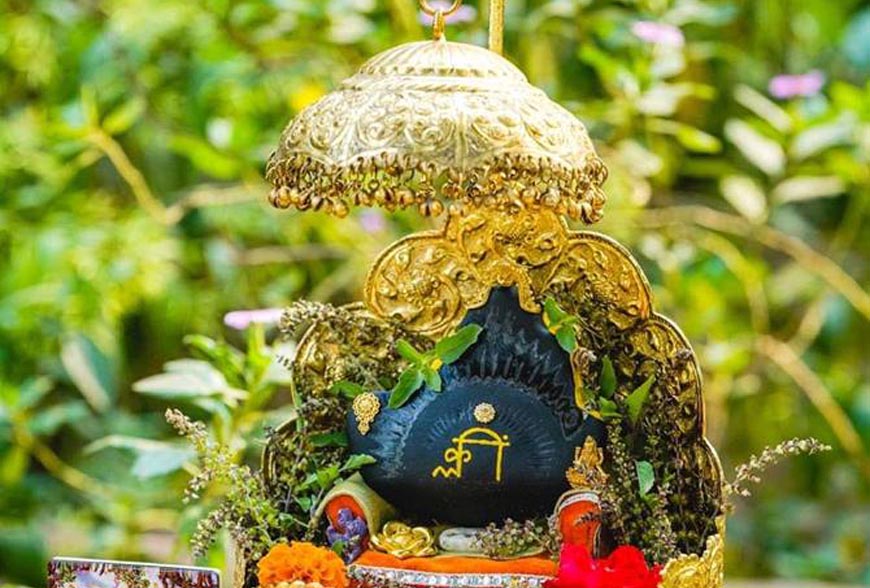God’s own stones – Shaligrama

Objective
Most of the Hindu Brahmin families have a puja box and a couple of shaligrama in it but many worship them without knowing the form of the Lord. This site is conceived to share the available information on shaligrama shilas, to help identify the specific types and sub-types of shaligrama. The Purana quotes and sample shaligrama pictures of that type are mentioned wherever available. I have collected photographs of the shaligramas listed here from many sources for explanation.
History
Shaligrama shilas (stones) are the highest holy object for Hindus, especially the vaishnavite group of Hindus. They revere these shilas as the symbol of God. Shaligramas are mentioned in all 18 Puranas and some of them describe various types, subtypes, and the merit of worshiping, etc. The culture of worshiping them is very ancient, at least from treta or dvapara yuga. In the olden days, they were never sold or purchased, for, doing so was considered a sin.
These holy stones are found only in the Kali Gandaki river in Nepal. The Kings used to gift the saints and knowledgeable brahmins (pundits) who visited the kingdom with shaligramas and they used to distribute among the worthy. They were passed down to their generations and hence they were rare commodities. People valued its possession to the highest degree. They are found only in the gorges of river Kali Gandaki and its upper regions of Damodar Kund. Access to these places is still not very easy but some of them are making their living by collecting shilas in these places. Those gathered are distributed across the country and beyond for a price. The recent transport and communication developments have led people to travel to the country to sell them. The internet has helped to buy them from the comfort of home. The once so hard to get is made so easy now.
About idol and Shaligrama worship
Lord Vishnu is present everywhere. He is present in the smallest particle of dust and also in the biggest mountains. He is present in anything and everything we see and do not see. He is present in the living and nonliving beings. He is present in the stones as well. However, there is a subtle difference between His presence in the ordinary stones and Shaligramas. In ordinary stones, he is present like he is present everywhere. But in the case of shaligrams He has manifested Himself in the form of stone. For the ordinary mortals, Shaligramas appear as mere stones whereas the learned look at them as living beings (chetanatmaka rUpa). Ordinary stones are not worship-worthy when they are not carved and consecrated with a specific form of the Lord. However, Shaligrama stones are very sacred by nature and they don’t require carving or consecration ceremony. God is present in it always, watches and accepts the oblations by the worshiper.
God has many forms, infinite forms and so do His Shaligrama manifestations. Shaligrama stones are only found in the Kali Gandaki River in Nepal. Other similar-looking stones found elsewhere are not Shaligramas and are not worship-worthy. Shaligramas are an integral part of our culture. Their worship is mandatory in all ceremonies right from childbirth to the funeral. Any form of ceremony or idol worship is complete only when done along with Shaligramas.




